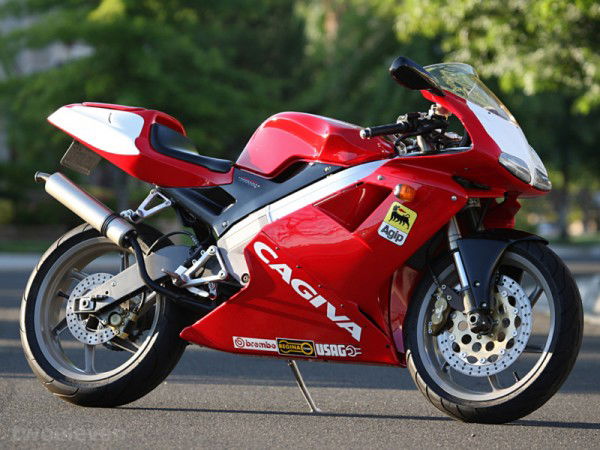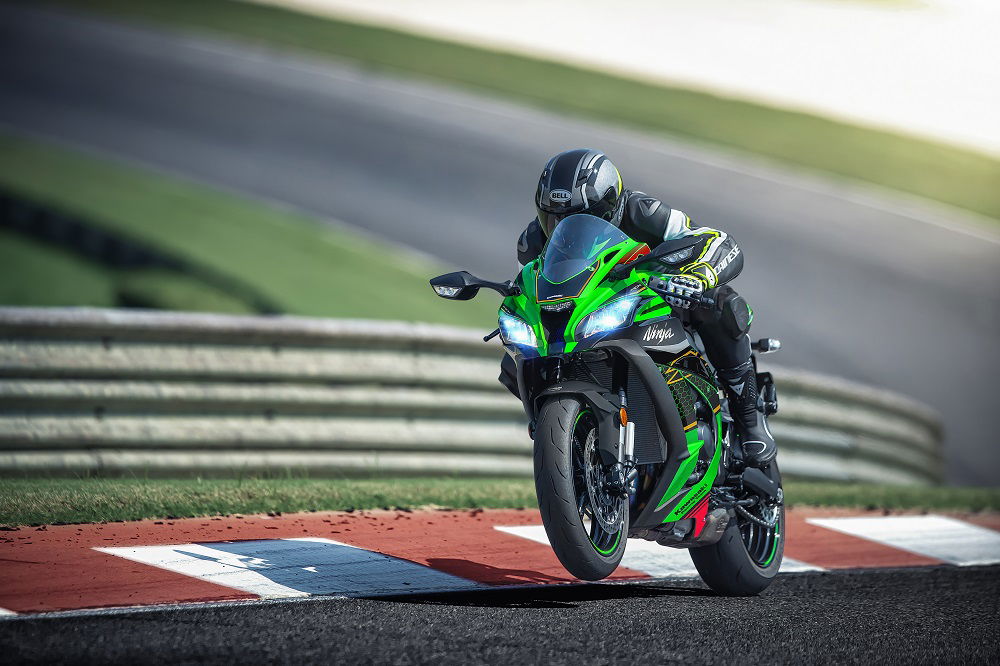The BMW M 1000 RR and the limit-pushing race-bred bikes that changed the game
How the first-ever BMW Motorrad M-performance sportsbike is following in some mighty tyre tracks from over 30 years of WorldSBK race-to-road specials
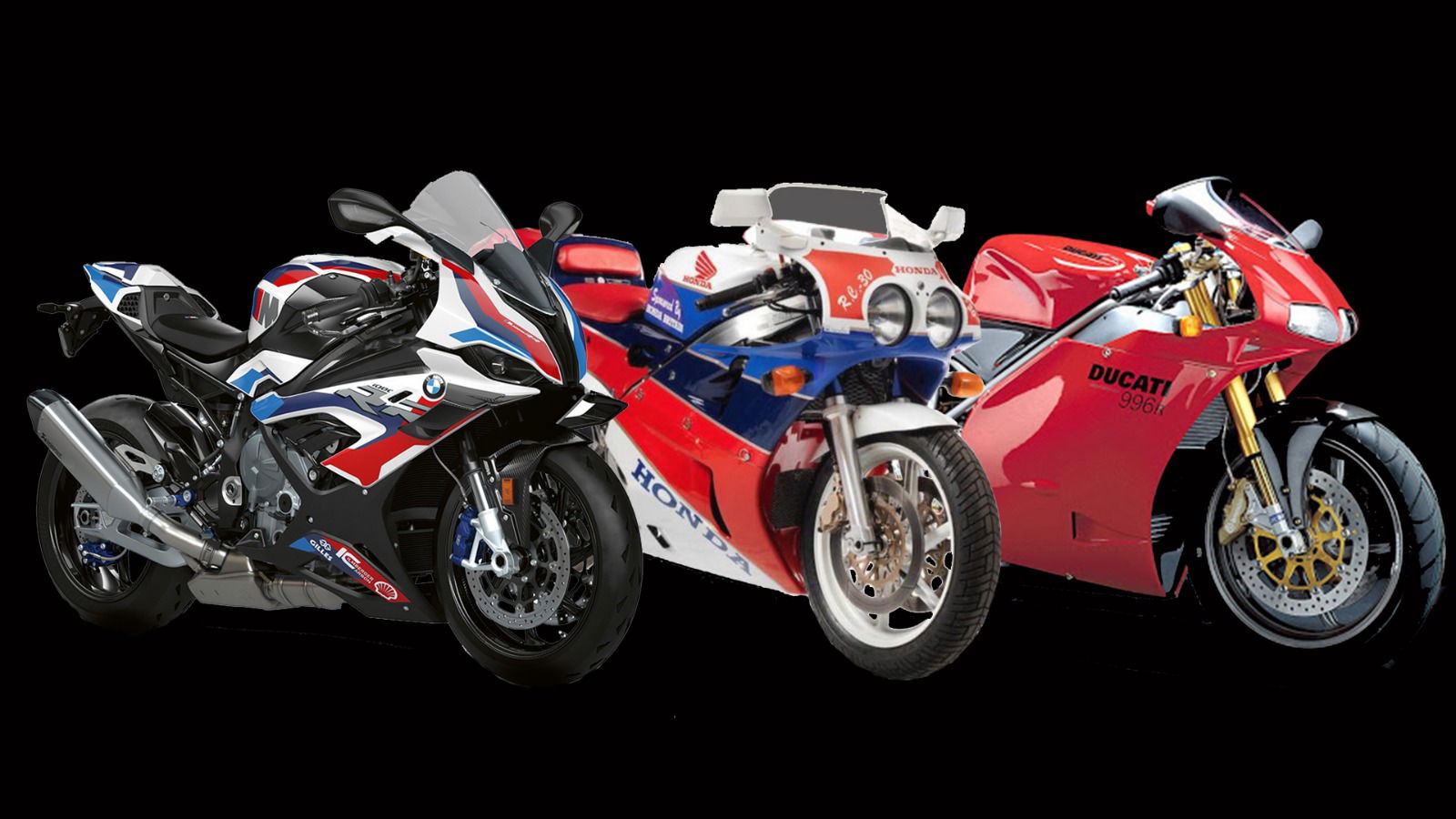
BMW’s just unveiled, hopped-up, 209bhp ‘homologation special’ M1000RR is many things.
For a manufacturer so iconic in its own way on both two and four wheels, this is nonetheless the first time its two arms have crossed over with this being the first BMW Motorrad to take the ‘M’ suffix, reserved for the German marque’s high-performance cars, such as the M3 and M5, for decades now.
From the outset it’s the most exotic, potent and mouth-watering BMW superbike yet. Based on the stock BMW S 1000 RR, a host of engine internals, electronics and exhaust changes boost power from 204 to 209bhp at a 500rpm higher 14,500rpm while it also boasts specially-developed Nissin brake calipers, carbon fibre winglets and much, much more.
And, starting at £30,935, and developed very much from the track (but also legal for the road), it’s intended as the new, limited edition basis for BMW’s WorldSBK racer in the face of new competition from Ducati, Yamaha and Honda despite this only being the S 1000 RR's second season on track
But although the BMW M 1000 RR may be marque's first ‘homologation special’ from its relatively young superbike limeage, it’s a nonetheless a well worn trend from the days when winning on Sunday and selling on Monday wasn't as simple as turning up with a showroom-fresh machine.
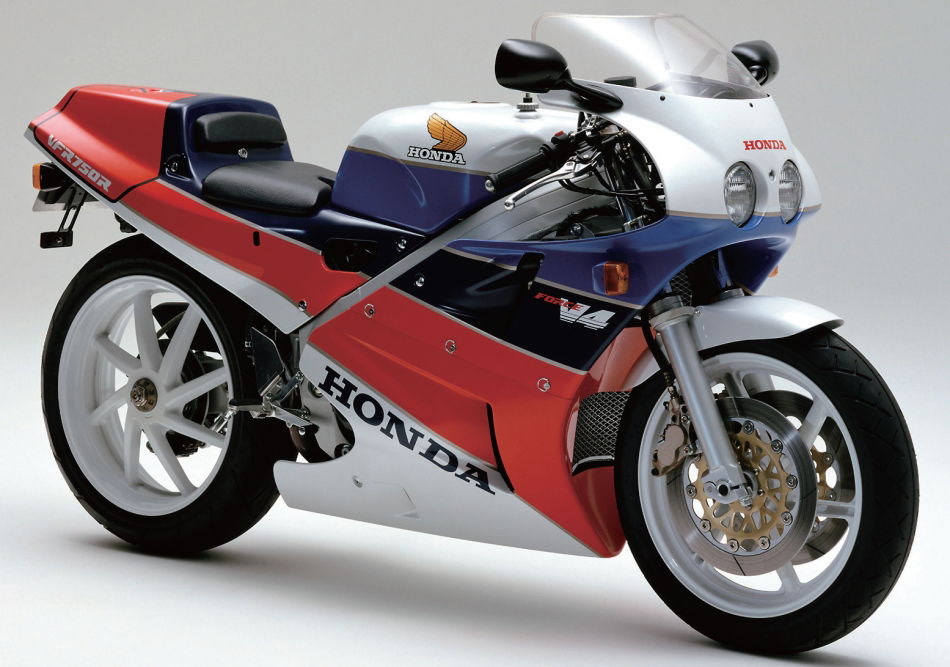
Being great on the road, doesn't make a champion...
The term ‘homologation special’ was borne out of the rise of production-based bike racing and particularly that of WorldSBK, which had its inaugural season in 1988.
That year was the first time a production-based formula had been given the world stage bringing with it the potential for huge positive publicity for models you could, in effect, purchase for yourself the very next day. Unsurprisingly, the leading manufacturers took it very seriously.
In WorldSBK, race machines had to be based on road legal bikes which were available to be bought by the public – not one-off, hand-built prototypes available only to race teams as in GPs.
But, seeing as road bikes, by definition, were not focused on winning on the track, the manufacturers were naturally motivated to build special machines that pushed the envelope further - after all, who needs a comfortable bike when you're only blasting it for 30mins in a race.
It wasn't a complete free-for-all with regulations put in place to prevent them morphing into prototypes, namely homologation numbers that stated a minimum number had to be manufactured with the intention of them being sold. However, this minimum quota has fluctuated over the years, while in the case of Petronas, it simply met the number and then allowed most of them to gather dust in an Essex shed... (read more here)
The so-called 'homologation specials' were certainly the cream of the crop intended for racing rather than riding home, which is why many ended up with exorbitant price tags.
The bike that kicked off the whole ‘homologation special’ concept was, arguably, the most exotic of them all. Motivated not only by the new WorldSBK formula but also to create a winner for World Endurance, Honda launched the VFR750R (or RC30 as it’s more commonly known) in time for the 1988 season.
Hand built by Honda’s racing division, HRC, it was developed from its factory RVF750 racers, featured a novel single-sided swing-arm (to aid endurance racing wheel changes), produced 100bhp and cost a whopping £8499 when most conventional 750cc sports bikes were around half.
It changed the world overnight, winning, not just in WorldSBK (taking the championship with Fred Merkel in both 1988 and 1989), but also becoming the go-to production racer in the process setting the template for all ‘homologation specials’ which followed.
And, boy, did they follow.
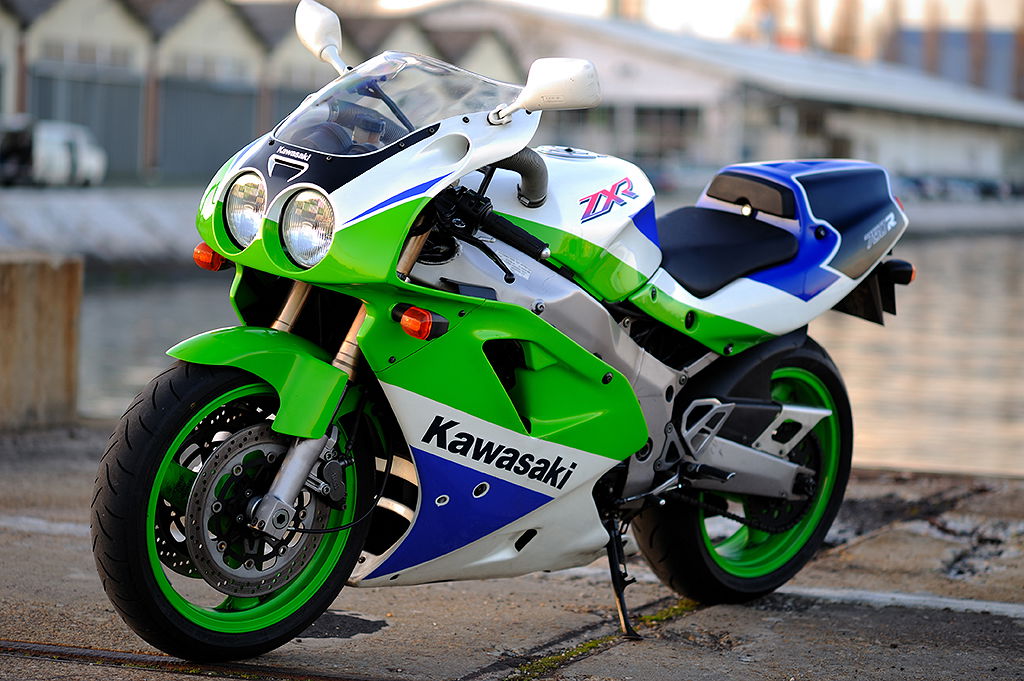
Shredding the sportsbike rule-book
Next was Yamaha in 1989 with its FZR750R, better known as the OW01. Priced at an even more extravagant (at the time) £13,300, it may have been based on the road-going FZR750 but that’s where the similarities ended.
The five-valve motor featured flat-slide carbs, titanium con rods and a close ratio gearbox; the chassis had an Ohlins shock and the result produced a heady 119bhp. And although it never actually won the WorldSBK crown the Yamaha claimed domestic superbike titles around the world.
It wasn’t alone. We had the Suzuki GSX-R750RR in 1989, distinguished by its longer stroke motor, close-ratio gearbox, larger 40mm carbs, aluminium fuel tank and single seat. Then Kawasaki followed a similar approach with its first ZXR750R (or, more accurately, the ZXR750K), in 1991. Neither were as thorough, bold or, arguably, as successful as the Honda and Yamaha but they were also far more affordable and, today, have a similarly strong following as a modern classic.
Just as quickly as these ‘homologation specials’ began to appear… they started to fade away, too.
That said, it’s worth saying here that there was a parallel flurry of homologation special ‘mini-superbikes’ at the same time – RR versions of 400cc sports machines primarily built for Japan’s hugely important 400cc domestic market which were also raced in Japan’s F3 production class and arrived in the UK as grey imports
In WorldSBK, although the Honda RC30 was successful, most of the following decade was dominated by Ducati. In 1993 Scott Russell gave Kawasaki what would be its only WorldSBK title for 20 years with the ZXR-R, while Honda’s RC45 - successor to the RC30 - was even more exotic and expensive, only managed one, with John Kocinski in 1997.
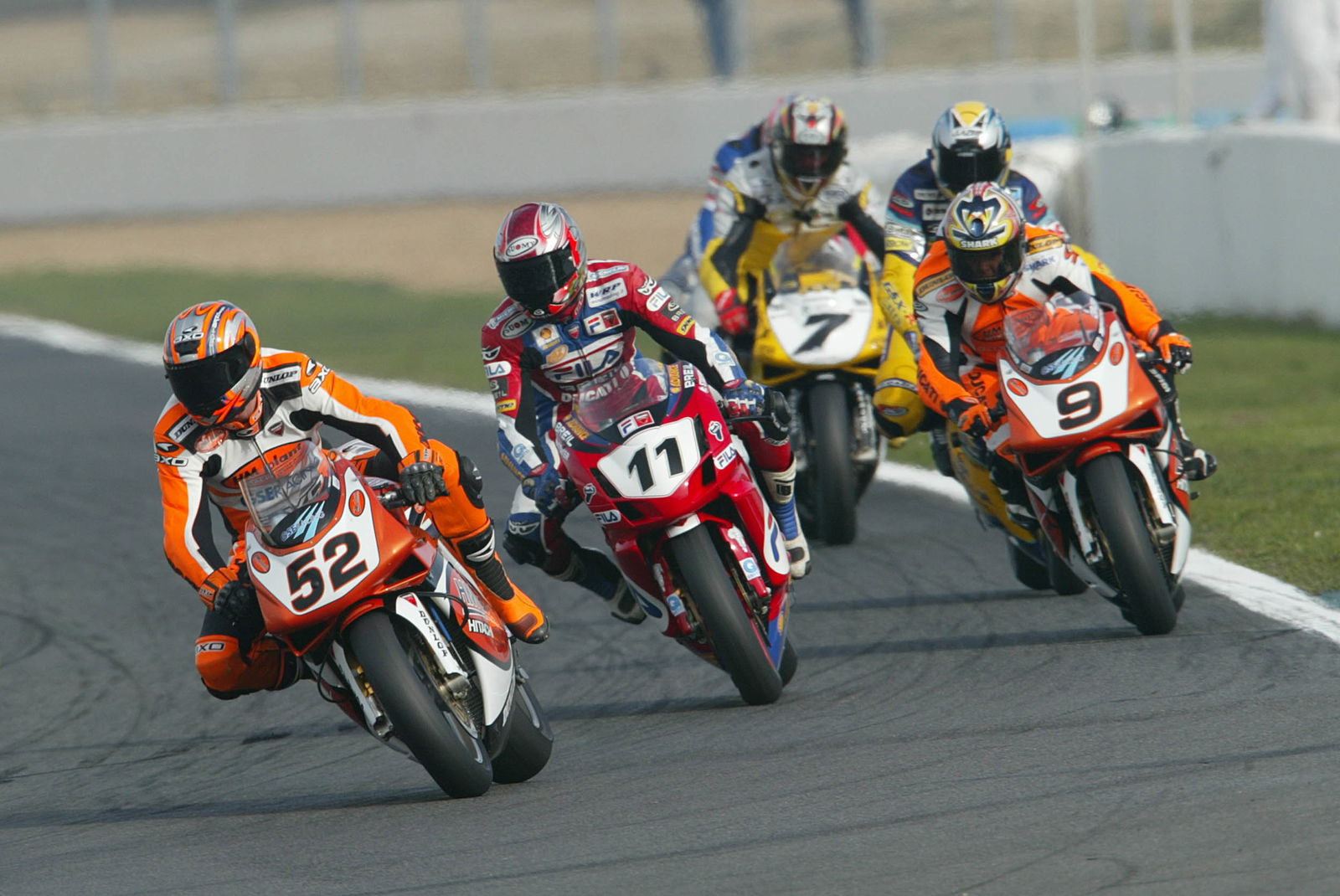
Ciao Ducati, arrivederci everybody else...
The main reason for that was a red, Italian machine. Ducati’s booming 851/888/916s, being twins competing against the Japanese fours, were allowed by the regulations to be 1000cc. And that, added to the smaller Italian company being allowed much smaller production numbers in order to homologate its racing specials (remember the 916SP, SPS, 955, 996R, 998R etc?) gave Ducati a significant advantage.
Between 1990 and 1999 Ducatis won the WorldSBK title no less than eight times, four of those going to Britain’s own Carl Fogarty. Even Yamaha, first with its mildly-modded YZF750SP in 1994, then, with its full-on factory racer R7 in 1999 couldn’t wrest the crown back.
It was that lack of success which spelled the end of the first era of homologation specials. If the Japanese giants, with all their resources, couldn’t get their 750 fours to beat the Italian twins, then they had no choice but to join them. Honda did exactly that by building its own ‘Ducati’ for 2000. Campaigned by Colin Edwards, the SP-1 won the title first time out. He repeated the trick upon the updated SP-2 in 2002.
For the rest of the Japanese, however, that was a step too far. By 2003, Yamaha, Honda and Kawasaki had pulled out, to focus instead on MotoGP. Then, in 2004 no Japanese teams entered the series prompting an overhaul of the WorldSBK regulations which saw the 750cc four/1000cc twin formula scrapped, replaced by a blanket 1000cc specification from 2005.
But another rule change was just as significant. At the same time the FIM decreed that the larger manufacturers must produce a minimum of 2000 in order to homologate their machines – a number which made ‘homologation specials’ prohibitively expensive.
That situation continued until 2015 when the FIM reduced that number to 1000 which encouraged Honda to build the CBR1000RR-SP and Yamaha its R1-M. While for 2017 that number was reduced further to 500.
.jpg?width=1600)
Homologation specials: The new generation
It’s that change which has led to a steady stream of new homologation specials, most notably the Ducati Panigale V4 R, which goes to the effort slimming the size of the engine (but upping the power) to meet regulations and tacks on some wings for good measure… a feature you’re going to see a lot more of in the coming years.
In response, the Kawasaki ZX-10RR was readied (even if a whole new generation is on the horizon now), while the Honda CBR1000RR-R comes in standard and SP flavour for the track day enthusiast.
All this means the BMW S 1000 RR looks old before its time - especially in a racing context where it has been out-performed by its rivals this year - but results in the M 1000 RR that can blend all of BMW’s engineering nous into a clever package.
As for the future, regulations will allow for the wings to move very soon - which could be enough to change the rules of the game yet again...
